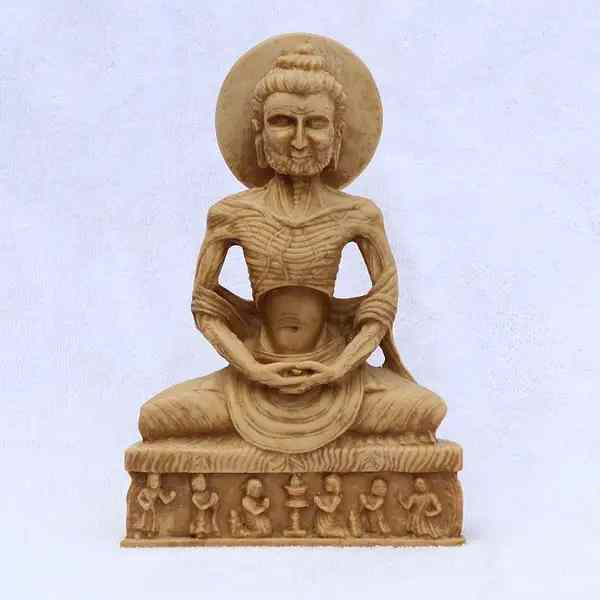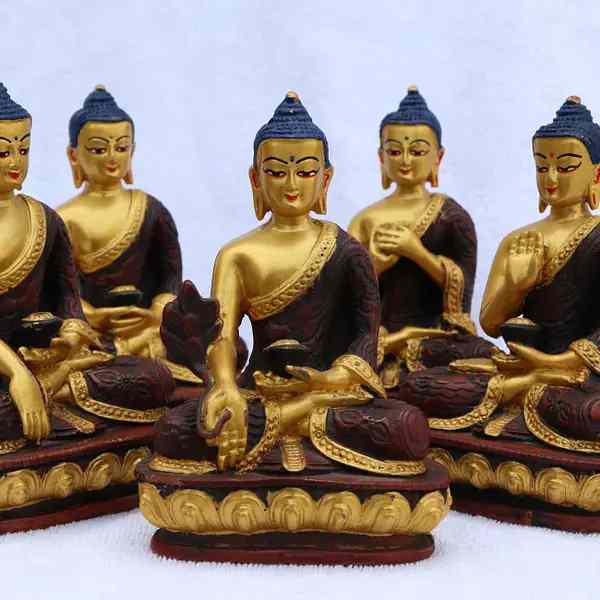Buddhism is one of the most profound traditions that has left a significant mark across the globe. One special set of marks left by Buddhism is the various statues. While Buddhism does not worship statues like deities, they do contain significant meanings. However, with so many types of Buddha statues, it can be confusing to understand their meaning. So, what are some of the most popular Buddha statues and their meaning?
In this blog, we talk about some of the most popular Buddha statues and their meanings. So, with this in mind, let’s get started!
Most Popular Buddha Statues and Their Meanings

Now, as we all know, there are different types of Buddha statues you can choose from. Each type of Buddha statue has its own set of meanings. Following are some of the most popular types of Buddha statues and their meanings.
Meditation Buddha Meaning
The Meditation Buddha is also known as Amitabha, the Buddha of boundless light. The statue of this Buddha represents the aspects of meditation and turning your attention inward. Additionally, this Buddha statue also represents calmness and peace.
Laughing Buddha Meaning
Laughing Buddha is one of the most iconic Buddha statues. He is depicted as a pot-belly Buddha with a laugh on his face. He represents the aspect of celebration, happiness, wealth, and balance in all aspects of life.
Sometimes, Laughing Buddha is depicted as standing or with children. If you have the Standing Laughing Buddha Statue, it represents the flow of luck. It is a tradition to rub his belly for luck. Similarly, the Laughing Buddha Statue with Children represents the aspect of keeping our life and priorities in Balance.
Teaching Buddha Meaning
Also known as Dharma Chakra Buddha, the Teaching Buddha statue symbolizes wisdom, understanding, and fulfilling one’s destiny. Additionally, teaching Buddha also symbolizes the sharing of knowledge.
Medicine Buddha Statue Meaning
Medicine Buddha signifies health and healing. These Buddha statues are generally blue, which represents ancient paintings. Furthermore, this Buddha statue also signifies the protection of health and the enhancement of luck.
Sitting Buddha
Sitting Buddha is another popular type of Buddha Statue. This statue represents the meditative sitting posture of the Buddha. Additionally, this statue also signifies enlightenment.
Standing Buddha
Similar to Sitting in Buddha, this Buddha statue represents the readiness of lord Buddha to help and assist all beings. Likewise, the standing Buddha statue also signifies the aspects of kindness and compassion of the lord Buddha. It reminds us that we should be ready to help anyone in need to the best of our abilities.
Walking Buddha Statue
The walking Buddha statue shows Buddha walking with his right hand raised. The hand is raised in the gesture of fearlessness and protection. The combination of the gestures and walking posture signifies the readiness of lord Buddha to help anyone on the path to enlightenment. Furthermore, this type of Buddha statue also represents his kindness and compassion towards all sentient beings, be they humans or bugs.
Reclining Buddha
The reclining Buddha statue shows the Buddha relaxing on his side with his head resting on his hand, cushion, or a pillow. This statue represents the final moment of Buddha before attaining Nirvana. This type of Buddha is mostly shown in temples and other forms of Buddhist establishments.
Protection Buddha
Protection Buddha is a statue of a seated Buddha with the right hand raised in front of the chest and outward from the body. This type of Buddha statue has two common meanings. The right raised hand of Buddha represents a shield overcoming fear, courage, and delusion. The other meaning represents protecting delusion, fear, and anger.
Earth Teaching Buddha
Earth-touching Buddha sits cross-legged and with his left hand sitting on the lap. The right hand of this Buddha statue points towards the ground, and the palm faces upward. The middle finger is slightly touching the ground. This Buddha represents the story of Buddha on the verge of enlightenment.
Gift Giving Buddha
The gift-giving Buddha represents the statue of Buddha that is seated. The right hand is stretched over the right knee while the right-hand falls with the palm facing towards the viewers. This statue of Buddha represents granting gifts of medicine to sentient life.
Debating Buddha
The debating Buddha represents the teaching of Dharma. It is a Buddhist symbol used for intellectual discussions. In the statue, the tips of the thumb and index finger touch each other and form a circle. The palm of the right hand face outwards as the hand gesture on this statue represents Dharmachakra mudra. This statue also signifies the importance of discussion, teaching, and intellectual debates.
These are some of the most popular Buddha Statues and the meaning/ significance hidden behind the meaning.
Meaning of Buddha’s Hand gestures

Along with the meaning behind the statues themselves, the gestures of the statues themselves have their own meanings. These gestures either enhance the meaning of the statues or add a new meaning to the statue. Some of the most popular poses in a Buddha statue are as follows:
Abhaya Mudra
Abhaya Mudra, more commonly known as the mudra of no fear, signifies protection, peace, kindness, and dispelling of fear. In Theravada Buddhism, this hand gesture is made with the right hand raised to the soldier’s height and the palm facing outward. The fingers are upright and joined. This mudra is often associated with standing Buddha or walking Buddha.
Bhumisparsha Mudra
Bhumisparsha Mudra is another popular hand gesture that holds special meaning. This hand gesture represents the moment of Buddha’s awakening as the earth stands as witness. In this mudra, the right hand is hung loose, touching the ground.
Dharmachakra Mudra
Dharmachakra Mudra is one of the unique gestures used in Buddha statues. This hand gesture means the wheel of Dharma in Buddhism. Additionally, this hand gesture also signifies the teaching of the wheel of dharma. It depicts one of the most important moments in the Buddha’s life after he attained enlightenment. This hand gesture is formed when the thumb and index finger of both hands touch at their tips to form a circle.
Dhyana Mudra
In this hand gesture, the two hands are placed on the lap, with the four fingers resting on each other and the thumbs facing upwards towards one another diagonally. The palm faces upwards in this manner, and the hands are shaped in the form of a triangle. This hand gesture represents the meditation and concentration of the Good Law. Dhyana Mudra is also known as Samadhi Mudra or Yoga Mudra.
Varada Mudra
The Varada Mudra, also known as favorable mudra, signifies offering, welcome, charity, giving, compassion, and sincerity. This hand gesture is shown made with the left hand. It can be made with the arm crooked and the palm slightly turned up or the palm facing down and fingers slightly upright/ bent. It is often confused with Vitarka Mudra, which it closely resembles.
Vitarka Mudra

This is an iconic hand gesture that is represented in many depictions of lord Bhddna. This mudra signifies the transmission of teachings by the lord Buddha. It is also seen as the hand gesture that includes the energy of teachings and discussion of the spiritual principles. The Vitarka mudra is made by joining the tips of the thumb and index finger together while keeping the fingers straight. This hand gesture is similar to the Abhaya and Varada. The difference is that in this pose, the tips of the index fingers touch the thumbs, touching the index fingers. This forms a circle which represents the constant flow of energy and information.
Namaskara Mudra
The Namaskara Mudra, or Anjali, Mudra is the hand gesture of greetings, prayers, and adoration. The Anjali, in Sanskrit, has different meanings. Some of the meanings include reverence, honor, and celebration. This is a gesture of prayer made with palms folded.
Conclusion
Buddha Statues are one of the most popular ritual accessories out there. They are iconic and have deep spiritual significance. The good news here is that there are many Buddha statues out there. The only question before you make a purchase of Buddha statues is their meanings. In this blog, we talked about some of the most popular Buddha statues and their meanings. So, we hope you found this helpful.
If you want the best Buddhist statues, do check us out at Nirvana Mala. Furthermore, if you want more insights into the various aspects of religious accessories, do check out some of our other blogs. Thank you for reading till the end.
FAQ on Buddha Statues
Q: What is the meaning of the 5 Buddha statues?
A: The five Buddha statues (Akshobya, Amitabha, Ratnasambhava, Amoghasiddhi, Vairocana) represent the five families of Lotus, Lotus, Karma, Buddha, Vajra, and Jewel of Buddhas.
Q: What do the Buddhist statues mean?
A: While the specific meaning of Buddhist statues may vary, all of them have a few meanings in common. These common aspects include the teachings of inner peace, protection, and meditation.

